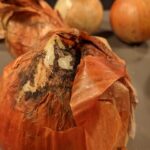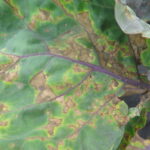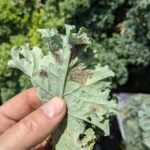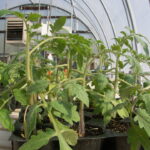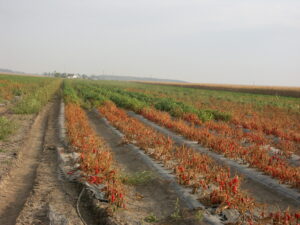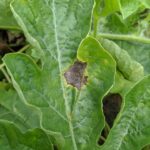In November of last year, a grower brought onion samples to my attention. The samples had been stored on a greenhouse bench after harvest. A black mold had developed on many of the onions. Some of the onions appeared to have developed rotten areas on the top of the onion at the neck (Figure 1).[Read More…]
Course: Online PCQI Certification – Watermelon Packing Dates: May 5 & May 6, 2022 Times: 8:00 am – 6:00 pm EST Online Platform: Zoom Cost: $1000.00 each participant To register: pcqiclasses@gmail.com or text 561-261-9747 Course Info: Kiley will lead a VIRTUAL but interactive training session (via ZOOM) across two days from 8:00 am – 6:00 pm each day.[Read More…]
Cabbage is the crop most often affected by black rot, however, other crucifers such as broccoli, cauliflower, mustard, kohlrabi or brussels sprouts may be affected. The first symptom one is likely to notice is a V-shaped lesion on the margin of the leaf (Figure 1). However, severe symptoms may become irregular and jagged (Figure 2).[Read More…]
Late last season, I observed Alternaria leaf spot on kale. I want to use this article to review this disease on all brassica crops. This disease also occurs on broccoli, cabbage and other leafy brassicas. Alternaria leafspot usually doesn’t cause yield loss, but can cause unmarketable leaves. The symptoms on leaves usually include round, dark[Read More…]
We are getting close to the time of year when I begin to get phone calls about strange symptoms on tomato plants in greenhouses. Too often, the problem is ethylene damage. Read on to find out how to avoid this problem. Tomato plants with ethylene damage often have leaves that are curled down and stems[Read More…]
Phytophthora blight caused by the pathogen Phytophthora capsici is one of the most important diseases in pepper production (Figure 1). The disease is difficult to control once established in a field. Using host resistance is an important approach in managing this disease. In past years, Rutgers Cooperative Extension has evaluated new bell pepper cultivars and[Read More…]
The Environmental Protection Agency (EPA) has proposed the following label changes including some use cancelations to the fungicides listed below. These fungicides mostly affect fruit growers; however, we include them here since many vegetable growers also grow fruit crops. Ziram, all conventional uses are proposed for cancellation. Thiram, all non-seed treatment uses proposed for cancellation.[Read More…]
3Gummy stem blight is an important disease of cucurbits in the Midwest. Gummy stem blight can cause lesions on leaves and stems of cantaloupe, watermelon and other cucurbits. Fruit lesions may be observed on pumpkin and, occasionally, on cantaloupe. Fruit lesions are known as black rot. Find more information about gummy stem blight and black[Read More…]
As vegetable growers get ready for the 2022 season, one question might be to find up-to-date information about fungicides and how to apply them. Some possible resources are listed below. The Midwest Vegetable Production Guide for Commercial Growers offers recommendations for fungicides and other pesticides and practices that have been updated for the 2022 season. The guide,[Read More…]

